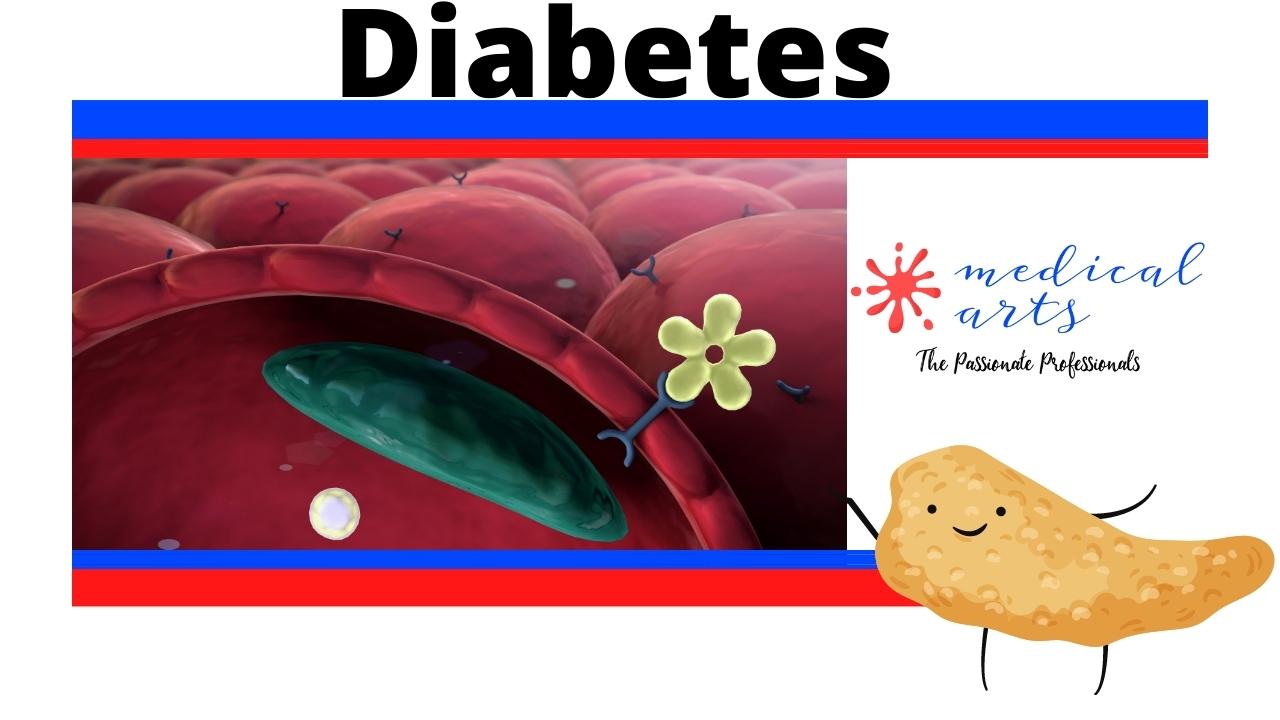In a normal situation when you eat a meal your digestive system will break down sugar into a simple form called glucose. Glucose is the main form of energy for our body.
From the digestive system, glucose gets absorbed into the blood.
As a result of increased blood glucose levels the beta cells of the pancreas secrete a hormone called insulin.
The role of insulin is to escort the glucose from the blood vessels into the cells to produce energy.
Insulin will bind to specific receptors found on the cells this reaction allows the entry of blood glucose into the cells.
In Type 1 diabetes,
An autoimmune reaction leads to the destruction of beta cells of the pancreas.
Fewer beta cells mean less secretion of insulin and Less insulin is available to bind to the receptors of the cells this Results in less glucose entering the cells.
This condition is treated mainly by injections of insulin.
Type 2 diabetes,
is caused by a condition called insulin resistance that is when the insulin bind to the receptors, but The cells ignore the insulin. Therefore, glucose cannot enter the cells. The causes of this condition are not well known. Insulin resistance may be reversed with increased physical activity, weight loss, and getting enough sleep.
In both type 1 and type 2 diabetes, glucose stays in the blood for longer than usual, causing abnormally elevated blood glucose levels, also called hyperglycemia.
The combination of high blood glucose, and a low supply of energy to the cells. are responsible for the signs and symptoms of diabetes, also for the short and long-term complications.

